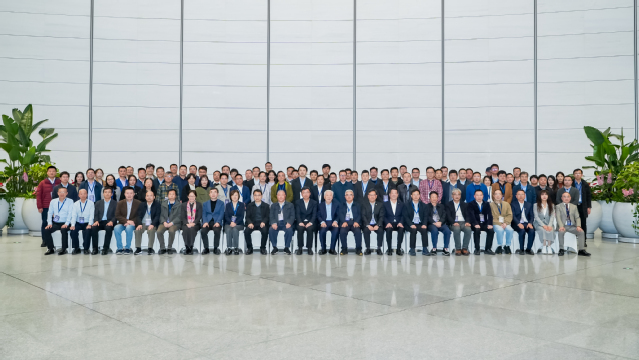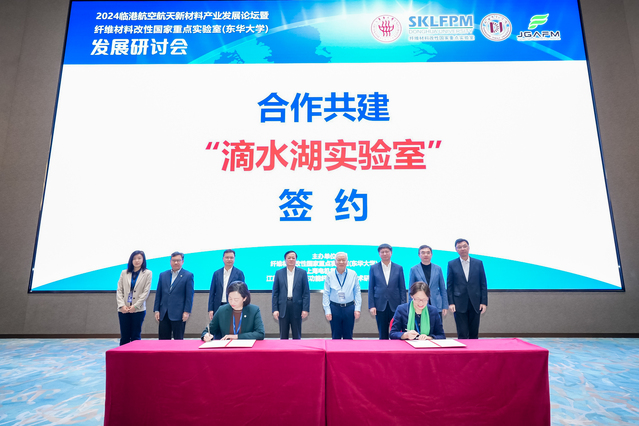
“The joint construction of the Dishui Lake Lab (DLL) will adhere to the principles of ‘complementary advantages, joint base development, collaborative innovation, and transformation promotion’. It will fully leverage Donghua University(DHU)’s disciplinary strengths in materials science, chemistry, and textiles; Shanghai DianJi University’s geographical advantage in Lin-gang, along with its strong industry-university collaboration; and the policy support and industrial guidance provided by Lin-gang Special Area Administration (LGSAA). The lab will focus on addressing critical challenges in aerospace materials and aims to establish a comprehensive research platform integrating scientific innovation, talent cultivation, and industrial incubation. It aspires to become a globally influential hub for aerospace material innovation, a base for technology commercialization, a center for cultivating entrepreneurial talent, and an international collaborative innovation hub.”
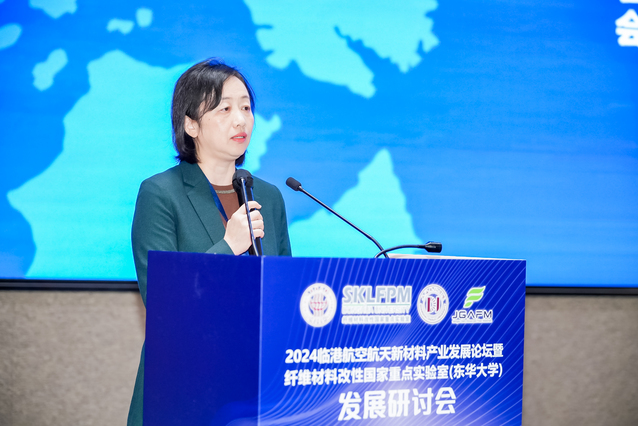
From 25 to 26, November, the 2024 Lin-gang Aerospace New Materials Industry Development Forum and the Symposium on the Development of State Key Laboratory for Modification of Chemical Fibers and Polymer Materials (SKLFPM)were held at the permanent venue of the WLA Forumin the China (Shanghai) Pilot Free Trade Zone Lin-gang Special Area. The event was jointly organized by DHU SKLFPM, SDJU, and Jiangsu Industrial Technology Research Institute(JITRI)’s Jiangsu Gem Advanced Fiber Materials (JGAFM).During the forum, the “Strategic Cooperation Framework Agreement on the Joint Construction ofState Key LabDLLby SKLFPM(DHU)and SDJU” was signed. Following the signingceremony, SDJU President Gong Siyi shared the above vision for the future development of the collaboration.
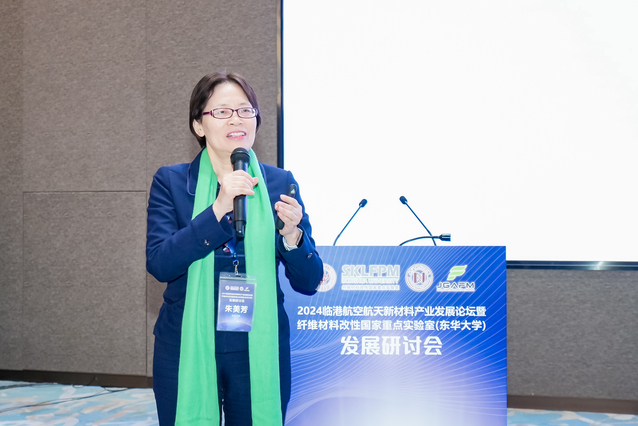
Academician of Chinese Academy of Sciences (CAS) and SKLFPM Director, DHU Zhu Meifang, stated that the DLL, as a branch of state key laboratory, will be dedicated to original scientific innovation and technology transfer, with a focus on cutting-edge fields such as advanced aerospace materials, green energy materials, and high-end power equipment materials. The lab will adopt a “triadic integration” operational model, closely linking universities, laboratories, and enterprises to facilitate the entire process from theoretical innovation and technology development to industrialization.SDJU will provide office space, laboratories, and facilities for technology incubation, along with appropriate proof-of-concept and pilot-scale testing sites. Additionally, our university will be responsible for recruiting a dedicated team of researchers and attracting renowned experts in the field.
According to the agreement, the signing parties will jointly establish a board of directors as the highest decision-making body of DLL. The board will be responsible for formulating the lab’s development plans, as well as strategies for technology and product development. Additionally, the lab will operate under a director responsibility system under the leadership of the board, ensuring the orderly progression of research and development activities.Both parties will also actively seek external resources and promote collaboration among government, industry, academia, and research institutions to provide strong support for its construction and development.
In recent years, SDJU has been actively leveraging its academic strengths and the industrial cluster advantages of the Lin-gang Special Area in its establishment of eight major disciplinarybranches, including high-end equipment, energy and power, integrated circuits, and new materials. Aligning with Shanghai’s development plans for large aircraft manufacturing and the commercial aerospace industry, SDJU has strategically positioned itself in the aerospace sector, further clarifying its goal of becoming a nationally recognized applied technology university with a strong aerospace focus.The establishment of DLL with SKLFPM is a significant step in actively responding to China’s innovation-driven development strategy. It reflects our university’s commitment to integrating science and education, strengthening industry-education collaboration, and supporting Lin-gang Special Area in developing advanced manufacturing industries such as aerospace, high-end equipment, and energy and power. This initiative aims to contribute to the creation of a world-class frontier industrial cluster.
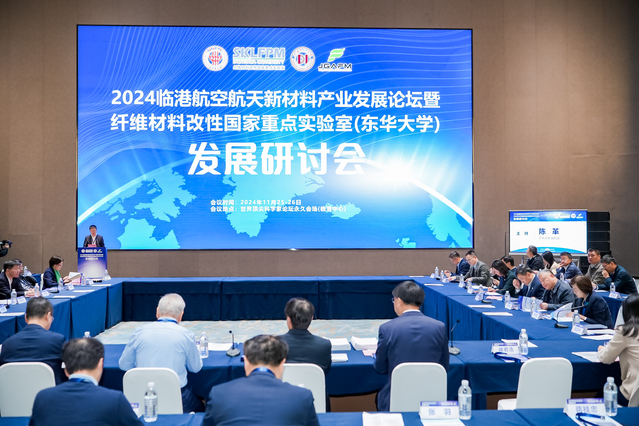
This symposium brought together 18 academicians from CAS and the Chinese Academy of Engineering, including Gu Binglin, former President of Tsinghua University; Zhang Xi, President of Jilin University; and Yu Jianyong, President of Donghua University. More than 100 experts, scholars, and industry leaders from over 60 institutions—including Tsinghua University, Fudan University, Zhejiang University, Jilin University, DHU, SDJU, Shanghai Institute of Ceramics, Chinese Academy of Sciences (SICCAS), the Third Academy of China Aerospace Science& Industry Corp., COMAC, China Chemical Fibers Association(CCFA), China National Textile and Apparel Council(CNTAC), and the Shanghai Qingpu District Aviation Industry Association—participated in the event.
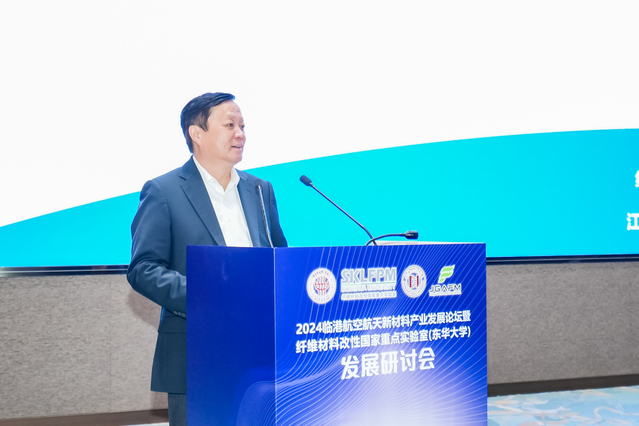
He Dongfeng, Secretary of CPC COMAC Committee and Chairman of COMAC, congratulated the successful convening of the symposium. He stated that the steady transition of China’s large aircraft from successful development to commercial success would not be possible without the strong support and active participation of materials science experts. He expressed his anticipation for deeper collaboration between COMAC and SKLFPM to jointly build an innovation system integrating industry, academia, research, and application, accelerating the application of high-performance fibers and composite materials in large aircraft projects.

Gu Binglin, CAS Academician and former President of Tsinghua University, extended his best wishes for the establishment of the jointly built DLL. He expressed his hope that the lab would fully leverage its “magnetic field” effect by providing advanced technological platforms, an innovative working environment, and broad development prospects. This, in turn, would attract and cultivate more high-caliber talents with international vision, innovative spirit, and practical abilities, thereby driving forward innovation and progress in fiber material technology.
The participating experts focused on the development of the aerospace new materials industry and its role in supporting the aerospace industry in Lin-gang Special Area. They engaged in active exchanges and in-depth discussions on various sub-themes.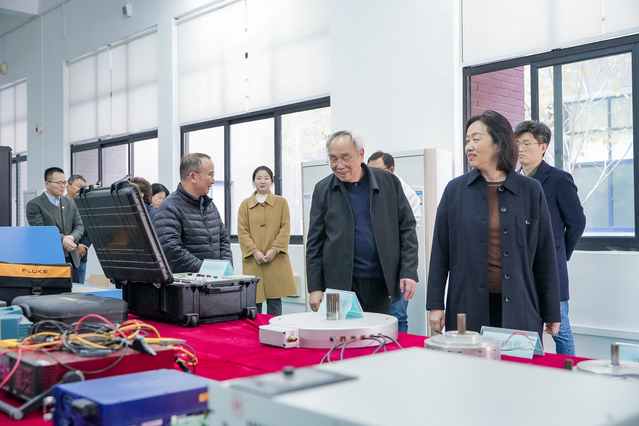
The experts also conducted an on-site visit our university, focusing on leveraging our university’s advantages in location, talent, facilities, disciplines, and technology transfer. They provided constructive suggestions on further exploring institutional and mechanism innovations, expanding the capacity of national-level research bases to serve local development, promoting scientific and technological innovation andtechnology transfer, and achieving the integrated development of education, science, and talent.
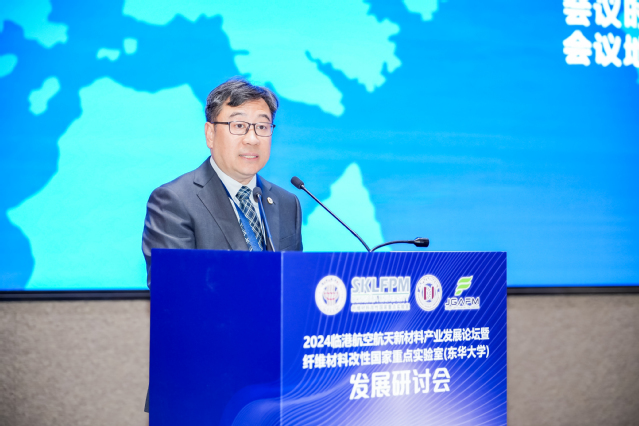
At the symposium, Lu Xionggang, Secretary of CPC SDJU Committee, emphasized that SDJU’s history of “emerging for industry, rising with industry, integrating with enterprises and prospering along the way”. He stated that SDJU remains committed to serving national strategies, regional economic development, and industrial transformation and upgrading, with a strong focus on cultivating excellencefield engineers. The co-establishment of DLL will not only enhance the research level and innovation capabilities of both parties in the field of advanced fiber materials but also significantly contribute to the development of a full-chain, whole-process technological innovation system in Lin-gang Special Area. It will further promote international collaborative innovation and support Lin-gang in building a world-class frontier industrial cluster.Looking ahead, SDJU will adhere to its characteristic development path of industry-education integration, leveraging its strategic location within the Lin-gang Special Area’s large aircraft manufacturing base and the core of Minhang Shanghai Aerospace City. Our university aims to actively expand its presence in the aerospace discipline and strengthen collaborations with industry enterprises, research institutes, and peer universities. Through resource sharing, complementary strengths, and win-win cooperation, SDJU seeks to jointly advance the coordinated development of the aerospace new materials industry.
